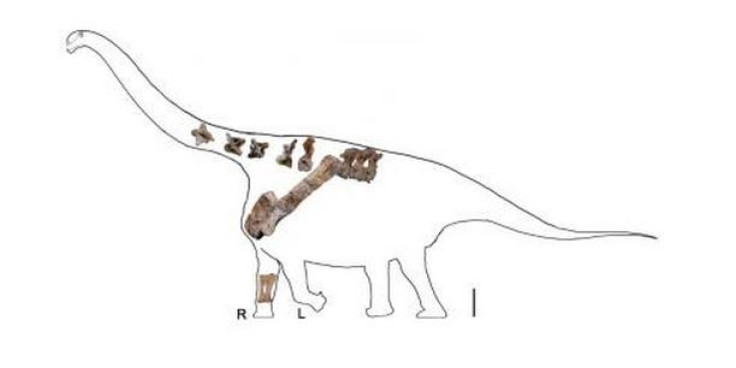Dinosaur Fossils From China Help Scientists Describe New Species That Roamed The Planet Millions Of Years Ago
A team of researchers, led by paleontologists from the University of Pennsylvania, has discovered dinosaur fossils in northwestern China, helping them characterize a new species of prehistoric animal that roamed Earth millions of years ago.
The new dinosaur species is a plant-eating sauropod named “Yongjinglong datangi” that existed during the Early Cretaceous period more than 100 million years ago. This sauropod belonged to a group known as Titanosauria, members of which were among the largest living creatures to ever live on the planet.
And, according to the researchers, the fossils belonged to a Yongjinglong individual, which was a medium-sized Titanosaur measuring 50 feet to 60 feet in length. The researchers also said, based on the remains found, that the animal was a juvenile while adults might have been even larger.
The latest discovery was made in the southeastern Lanzhou-Minhe Basin in China’s Gansu Province, about an hour’s drive from the provincial capital of Lanzhou. According to the researchers, it was the U.S. that was the epicenter for dinosaur diversity until recently, but China surpassed the U.S. in 2007, in terms of species found.
“As recently as 1997 only a handful of dinosaurs were known from Gansu,” Peter Dodson of University of Pennsylvania said, in a statement. “Now it’s one of the leading areas of China. This dinosaur is one more of the treasures of Gansu.”

The researchers believe that the findings, published in the journal PLOS ONE, help connect relationships among several sauropod species that have been found over the past few decades in China and elsewhere. The fossils’ features suggest that Yongjinglong is one of the most evolutionarily advanced Titanosaurs ever to have been discovered in Asia.
Liguo Li, a doctoral student at the University of Pennsylvania, studied the remains that consisted of three teeth, eight vertebrae, the left shoulder blade, and the right radius and ulna. While the anatomy of the bones bore some resemblance to another Titanosaur that had been discovered by paleontologists in China in 1929, the researchers were able to identify a number of unique characteristics.
“The shoulder blade was very long, nearly 2 meters, with sides that were nearly parallel, unlike many other Titanosaurs whose scapulae bow outward,” Li said.
In addition, an unfused portion of the shoulder blade indicated to the researchers that the animal under investigation was a juvenile.
To gain a sense of where Yongjinglong sits on the family tree of sauropods, the researchers were able to compare its characteristics with specimens from elsewhere in China, as well as from Africa, South America and the U.S.
“Based on U.S. fossils, it was once thought that sauropods dominated herbivorous dinosaur fauna during the Jurassic but became almost extinct during the Cretaceous,” Dodson said. “We now realize that, in other parts of the world, particularly in South America and Asia, sauropod dinosaurs continued to flourish in the Cretaceous, so the thought that they were minor components is no longer a tenable view.”
© Copyright IBTimes 2024. All rights reserved.












